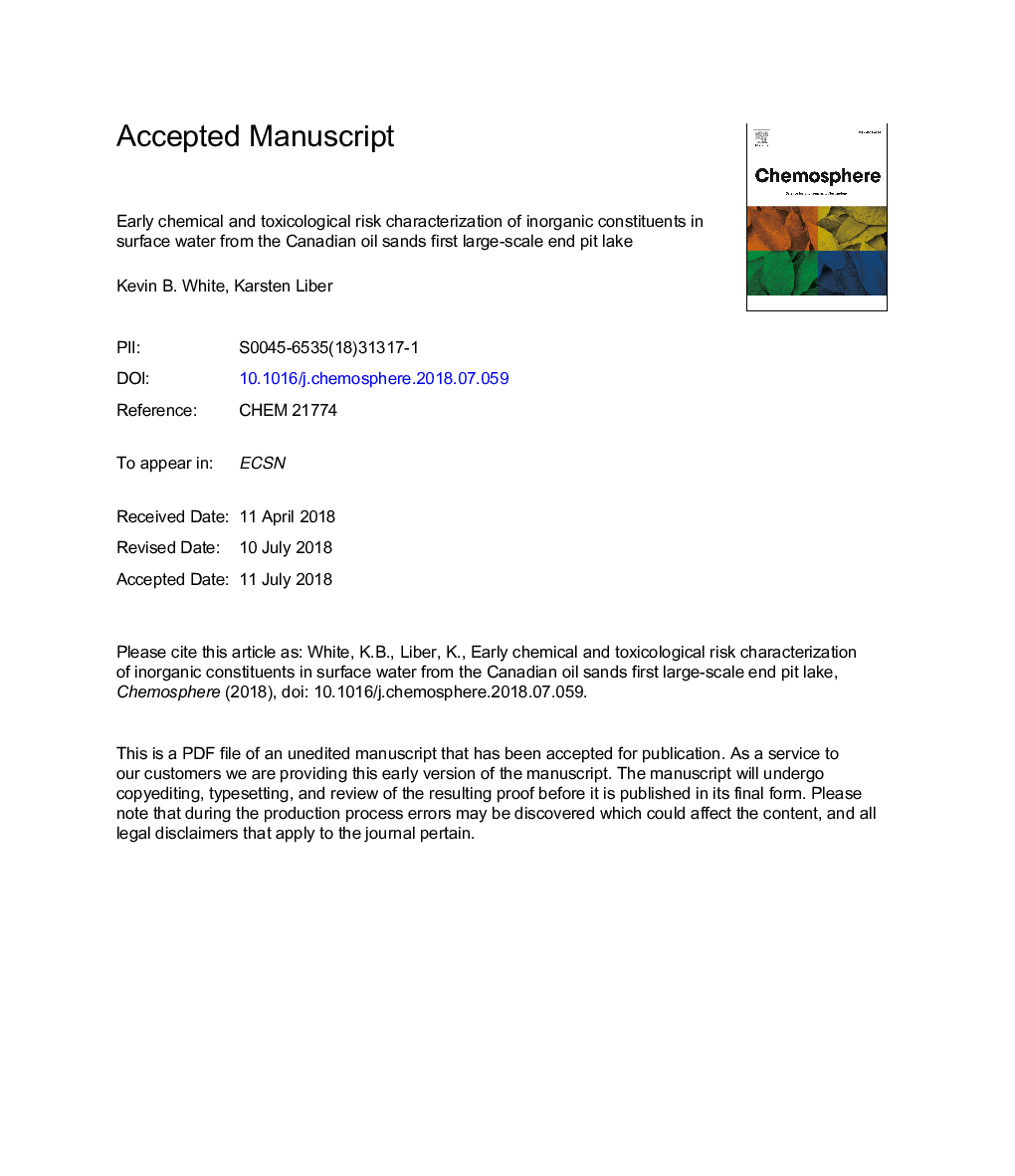| کد مقاله | کد نشریه | سال انتشار | مقاله انگلیسی | نسخه تمام متن |
|---|---|---|---|---|
| 8850336 | 1618760 | 2018 | 43 صفحه PDF | دانلود رایگان |
عنوان انگلیسی مقاله ISI
Early chemical and toxicological risk characterization of inorganic constituents in surface water from the Canadian oil sands first large-scale end pit lake
ترجمه فارسی عنوان
خطر ابتلا به مواد شیمیایی و سمی خطرناک سازنده های غیر معدنی در آب های سطحی از ماسه های نفتی کانادا اولین دریاچه گودال بزرگ در مقیاس بزرگ
دانلود مقاله + سفارش ترجمه
دانلود مقاله ISI انگلیسی
رایگان برای ایرانیان
کلمات کلیدی
ماسه های نفت، پایان دریاچه گودال، شوری فلزات، سمیت آبزی
موضوعات مرتبط
علوم زیستی و بیوفناوری
علوم محیط زیست
شیمی زیست محیطی
چکیده انگلیسی
End pit lakes (EPLs) have been proposed as a method for the long-term reclamation of process water and fluid fine tailings (FFT) produced from surface mining within the Canadian oil sands. These waste products contain elevated concentrations of dissolved organics, metals, and salts which reduce surface water quality and are toxic to aquatic organisms. This study measured the concentrations of inorganic constituents in surface water from the industry's first large-scale EPL over the course of a three-year period (2014-2016). The toxicological risk was subsequently assessed to identify constituents of concern that may impair surface water quality necessary for the development of a functional aquatic ecosystem or for release to the surrounding environment. Changes in surface water concentrations over the three-year period were strongly correlated with hydrological processes occurring within the lake: advective-diffusive chemical influx from FFT pore water to the overlying surface water was offset by efflux via continuous manual pumping (freshwater in, process water out). These processes resulted in a net dilution effect of approximately 5-10% per year, however, a significant chemical mass is expected to persist within the underlying FFT. Elevated salinity (as Na+, Cl-, HCO3-) and concentrations of boron and nickel were predicted to pose very high toxicological risk to aquatic organisms. Despite these risks, the discovery of wild Daphnia pulex in the August 2016 sample suggested that surface water quality was sufficient to support populations of certain salt-tolerant zooplankton and primary producers. However, the time required for development into a robust aquatic ecosystem remains unknown.
ناشر
Database: Elsevier - ScienceDirect (ساینس دایرکت)
Journal: Chemosphere - Volume 211, November 2018, Pages 745-757
Journal: Chemosphere - Volume 211, November 2018, Pages 745-757
نویسندگان
Kevin B. White, Karsten Liber,
